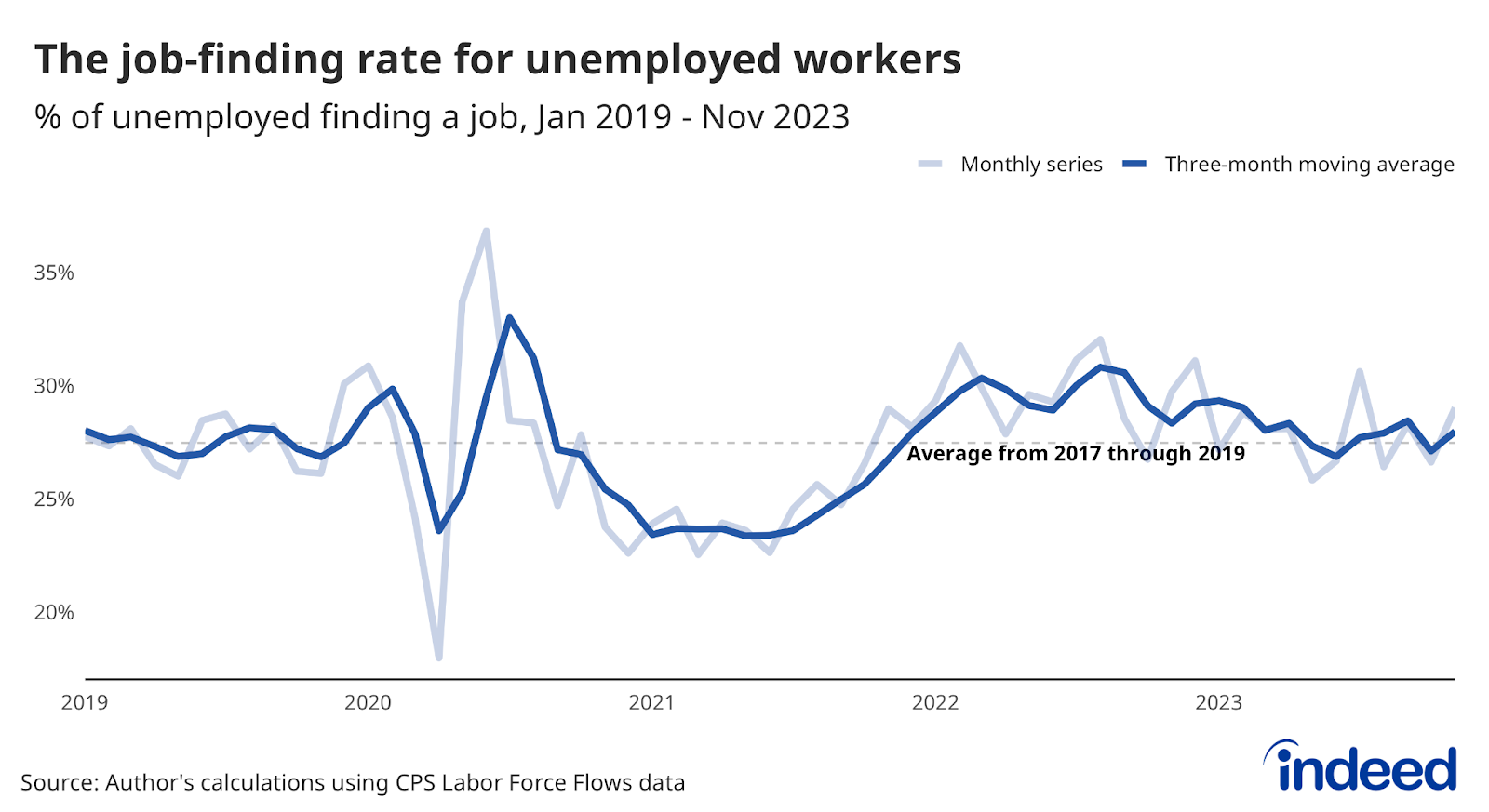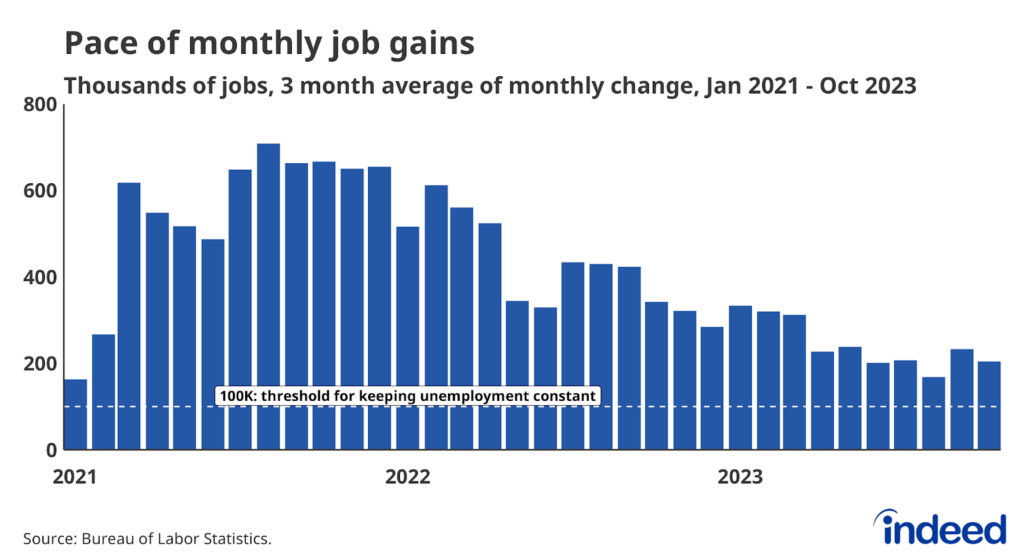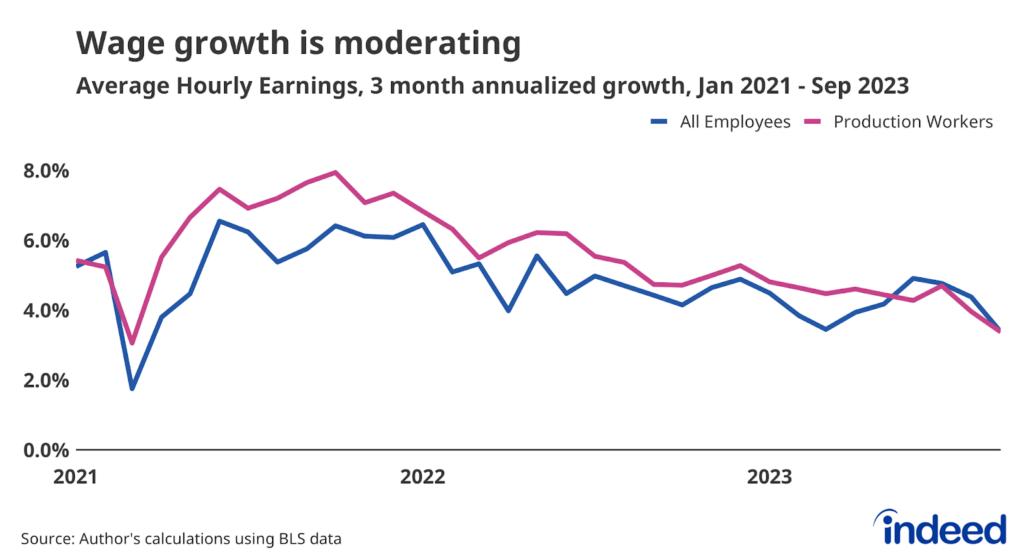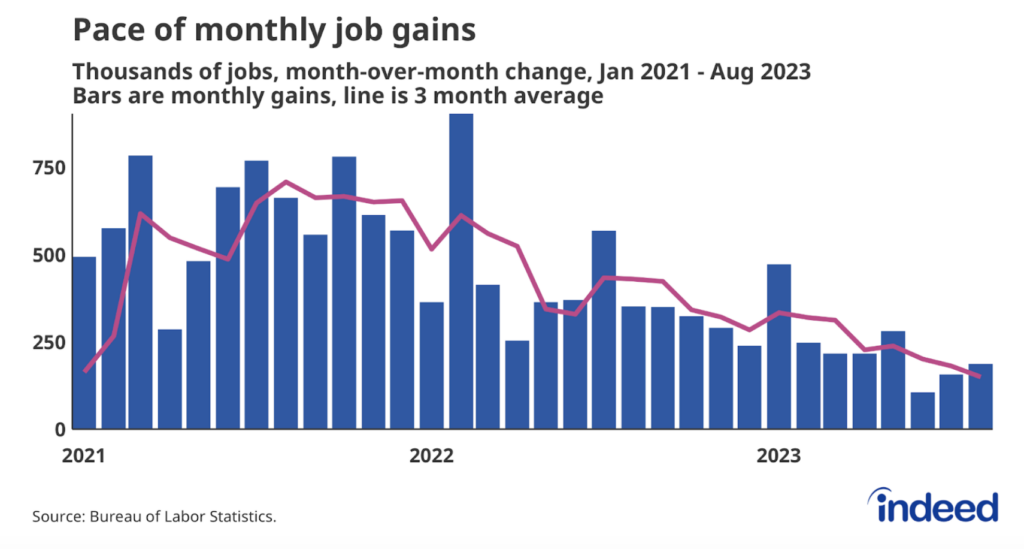Key points:
- Hiring remained strong but sustainable in November, as employers added 199,000 jobs boosted by workers returning from strikes.
- The unemployment rate declined to 3.7%, calming nerves about a rapid deterioration of the labor market.
- The labor market is no longer speeding along at unsustainable speeds but is heading into next year with ample momentum.
We’re running out of superlatives to describe just how resilient the US labor market is and has been. And it appears as though the market can continue chugging ahead. The pace of jobs being added is no longer bonkers, but it is sustainable. Unemployment ticked down, alleviating any fears that the US economy might soon tip into a recession. While job gains are becoming more concentrated in a few sectors, those sectors — mainly government and healthcare — are somewhat insulated from the interest rate hikes buffeting other parts of the economy. Wage growth at or near current levels is also largely sustainable. And people keep finding reasons to join the labor force instead of leave it, an encouraging sign for the longer term. Even accounting for workers who returned to the workforce after recent strikes, the pace of job gains is more than sufficient to keep up with population growth.
The recent upward trend in the unemployment rate scared some people, but November’s decline will calm those nerves. They’ll be even more encouraged looking under the hood at why unemployment fell. Unemployment declined as the labor force participation rate rose, a sign that joblessness is trending down. At the same time, the rate at which unemployed workers found a job rose in November and is in line with longer-term, pre-pandemic levels. Not only that, but the rate at which employed people moved into unemployment declined, a sign of low layoff activity. In other words, the unemployment rate is likely to stay low in the short term.
Payrolls continue to grow robustly, even after accounting for the temporary boost from workers returning from strikes. There are some sour notes in today’s data, but they might not be as dismal as they appear at first glance. Job gains from previous months were revised down, but only September’s – October gains were unrevised. November’s growth was very concentrated in the healthcare and social assistance industries, with 62% of last month’s private sector gains coming from those sectors alone. However, job gains were still relatively broad, with the diffusion index rising from last month’s level and showing that more industries added jobs than shed them in November. Even the large decline in retail trade employment may reflect seasonal adjustment issues more than widespread underlying weakness. Hiring Lab research has shown that seasonal hiring intentions in 2023 were down from last year, but still strong by pre-pandemic standards.
As this year ends, the labor market has ample momentum heading into 2024. Hiring is still robust, job loss is still low, and employment is high. At the same time, the labor market is no longer speeding along at unsustainable speeds. Wage growth is trending down, but it’s high enough to power income gains for most workers. The labor market has found a good balance and signs suggest it can stay that way.



